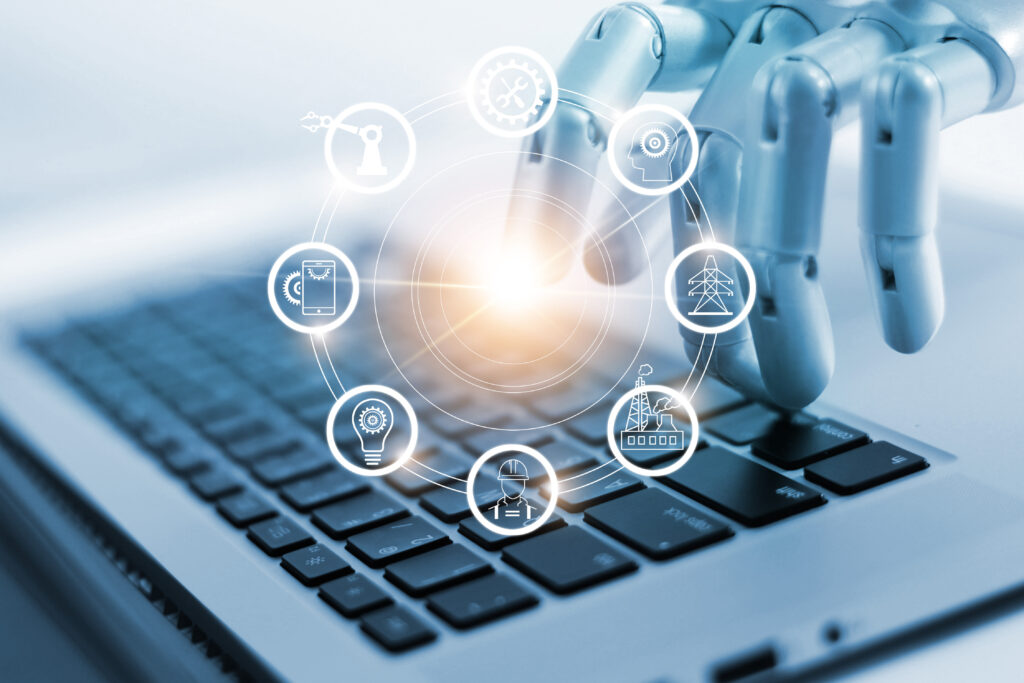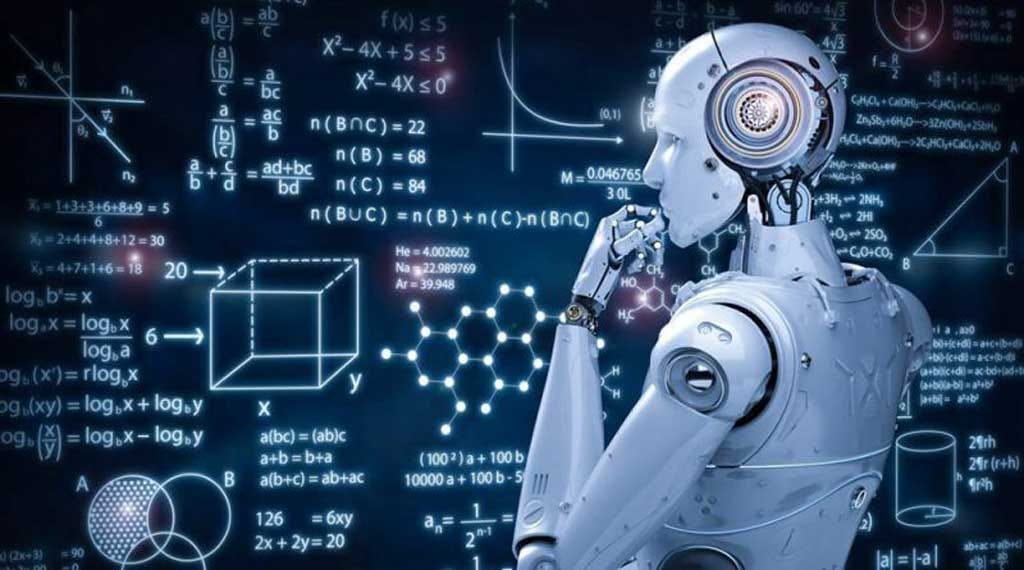Advances in Artificial Intelligence and Machine Learning
In this article we discuss the significance of AI & ML .Artificial Intelligence (AI) and Machine Learning (ML) are transforming the world at an unprecedented pace. From healthcare to finance, education to entertainment, these technologies are revolutionizing industries, making processes more efficient, and opening up new possibilities we could only dream of a decade ago. In this blog post, we’ll explore some of the most exciting advancements in AI and ML, shedding light on how they’re shaping our future.
Introduction
Artificial Intelligence (AI) is the field of making computers think and act like humans. Imagine teaching machines to learn, solve problems, and even understand our language! Machine Learning (ML) is a key part of AI. It allows computers to improve without explicit programming. By analyzing vast amounts of data, ML algorithms can identify patterns and make predictions. Together, AI and ML are transforming our world. From personalized recommendations to self-driving cars, these technologies are making our lives easier and more efficient. But AI and ML are still evolving, and the future holds exciting possibilities!
The Rise of the Machines (But Not Like the Movies!)
When we think of AI, images of futuristic robots and dystopian worlds often come to mind, thanks to Hollywood’s portrayal. However, the reality is much more nuanced and beneficial. AI and ML are not about machines taking over the world; they’re about enhancing human capabilities and improving our quality of life. From virtual assistants like Siri and Alexa to advanced algorithms predicting disease outbreaks, these technologies are here to assist, not dominate

Machine Learning on the Fast Track
Machine learning (ML) is accelerating at an unprecedented pace, transforming how we interact with technology and how businesses operate. At its core, ML enables computers to learn from data, identify patterns, and make decisions with minimal human intervention. The rapid advancements in computational power, coupled with the explosion of big data, have propelled ML from theoretical concepts to practical applications. In healthcare, for example, ML algorithms analyze vast amounts of medical data to predict patient outcomes, personalize treatments, and even identify potential epidemics. In the financial sector, ML enhances fraud detection, optimizes trading strategies, and improves customer service through personalized recommendations. Autonomous vehicles, once a futuristic dream, are now navigating complex environments thanks to sophisticated ML models that process real-time data from sensors and cameras. Moreover, the integration of ML in everyday applications, such as virtual assistants and recommendation systems, has made our interactions with technology more intuitive and efficient. Innovations like transfer learning and reinforcement learning are pushing the boundaries, allowing ML models to be trained more efficiently and effectively. Transfer learning enables models to leverage knowledge from one domain to improve performance in another, while reinforcement learning teaches models to make sequences of decisions by rewarding desired behaviors. As research continues to evolve, we can expect ML to become even more ubiquitous, driving advancements in fields we have yet to imagine. The fast track of machine learning is not just about speed; it’s about the transformative impact on our world, making it smarter, more efficient, and profoundly interconnected.
Deep Learning Gets Deeper
Deep learning, a subset of machine learning, is taking center stage in the realm of artificial intelligence, pushing the boundaries of what machines can achieve. Unlike traditional machine learning models, deep learning utilizes neural networks with many layers—hence the term “deep.” These multi-layered neural networks are designed to mimic the human brain, enabling machines to analyze complex patterns and make decisions with remarkable accuracy. The progress in deep learning is largely driven by advancements in computational power, particularly GPUs and TPUs, which can process vast amounts of data at high speeds. This has led to significant breakthroughs in various fields. For instance, in the realm of computer vision, deep learning algorithms have achieved superhuman accuracy in image and video recognition tasks. They are being used to power facial recognition systems, autonomous vehicles, and advanced medical imaging techniques. Natural language processing (NLP) has also benefited immensely, with models like GPT-4 understanding and generating human-like text, improving chatbots, translation services, and even creative writing. The realm of deep learning is not just limited to data analysis; it’s also making strides in generative tasks. Generative Adversarial Networks (GANs) are creating realistic images, music, and even deepfakes, pushing the envelope of creative AI

AI and Robotics: A Powerful Partnership
Imagine a surgeon with a steady hand, guided by the analytical power of a supercomputer. This isn’t science fiction; it’s the reality of AI and robotics working together. The fusion of these two fields is creating intelligent machines capable of performing complex tasks in the real world. In the medical field, surgical robots guided by AI algorithms are assisting doctors in delicate procedures with enhanced precision. These robots can hold instruments with unwavering stability, allowing surgeons to operate in minimally invasive ways.
The partnership extends beyond healthcare. Autonomous drones equipped with AI are being used for tasks like aerial photography and package delivery. Imagine a swarm of drones working together to deliver medical supplies to remote areas, or a drone equipped with AI that can inspect power lines for damage. The possibilities for these intelligent robots seem endless, and their potential to revolutionize various industries is undeniable. However, it’s important to remember that AI serves as the guiding intelligence, while robotics provides the physical body for action. This powerful partnership is pushing the boundaries of what’s possible, shaping a future where humans and intelligent machines work together.
The Rise of Explainable AI (XAI)
As AI systems become increasingly complex, wielding the power to make critical decisions in areas like loan approvals or medical diagnoses, a crucial question arises: how do we understand why these decisions are made? This is where Explainable AI (XAI) steps in. XAI focuses on developing techniques that make AI models more transparent. Imagine a “black box” that takes in data and spits out a decision – XAI aims to open that box, allowing us to see the reasoning behind the output. By analyzing the data used and the steps taken by the model, XAI helps us understand the logic behind its choices. This transparency is essential for building trust in AI systems. If a loan application is rejected, XAI can explain the factors that influenced the decision. In healthcare, XAI can help doctors understand why an AI system recommends a particular course of treatment. Ultimately, XAI is crucial for ensuring responsible AI development, fostering trust, and ensuring that these powerful tools are used fairly and ethically
The Impact of AI and ML: A Look Ahead
The advancements in AI and ML are poised to significantly impact our lives in the coming years. Imagine personalized learning experiences tailored to each student’s needs, or AI-powered assistants that can diagnose illnesses with greater accuracy. In healthcare, AI can analyze vast amounts of medical data to identify potential outbreaks or predict patient outcomes. Scientific research can be accelerated as AI helps researchers analyze complex datasets and uncover hidden patterns.
However, the impact extends beyond these specific fields. AI and ML have the potential to revolutionize transportation with the widespread adoption of self-driving cars, or optimize energy usage in our homes and cities. Even environmental sustainability efforts can benefit from AI’s ability to analyze data and predict climate patterns.
While these advancements hold immense promise, it’s important to acknowledge potential challenges. Job displacement due to automation and the ethical considerations surrounding AI development are crucial issues that need to be addressed. Ultimately, the future shaped by AI and ML hinges on responsible development and collaboration between researchers, developers, and policymakers. By harnessing the power of these technologies for good, we can create a brighter future for all.
Conclusion: A Future Shaped by Intelligence
The advancements in AI and ML paint a picture of a future brimming with possibilities. We’ve explored breakthroughs like powerful machine learning algorithms, the intricate world of deep learning, and the powerful partnership between AI and robotics. These advancements hold immense potential to revolutionize various fields, from healthcare and education to scientific research and environmental sustainability.
However, shaping this future responsibly is crucial. The rise of Explainable AI (XAI) emphasizes the importance of transparency and trust in AI development. Furthermore, addressing potential challenges like job displacement and ethical considerations requires collaborative efforts.
Ultimately, the future shaped by AI and ML is not something to fear, but an exciting journey to embark on together. By harnessing the power of these intelligent tools for good, we can create a future where humans and machines work in harmony to solve some of the world’s most pressing challenges and build a brighter tomorrow for all.

Pingback: Scope of Digital Marketing in Pakistan.